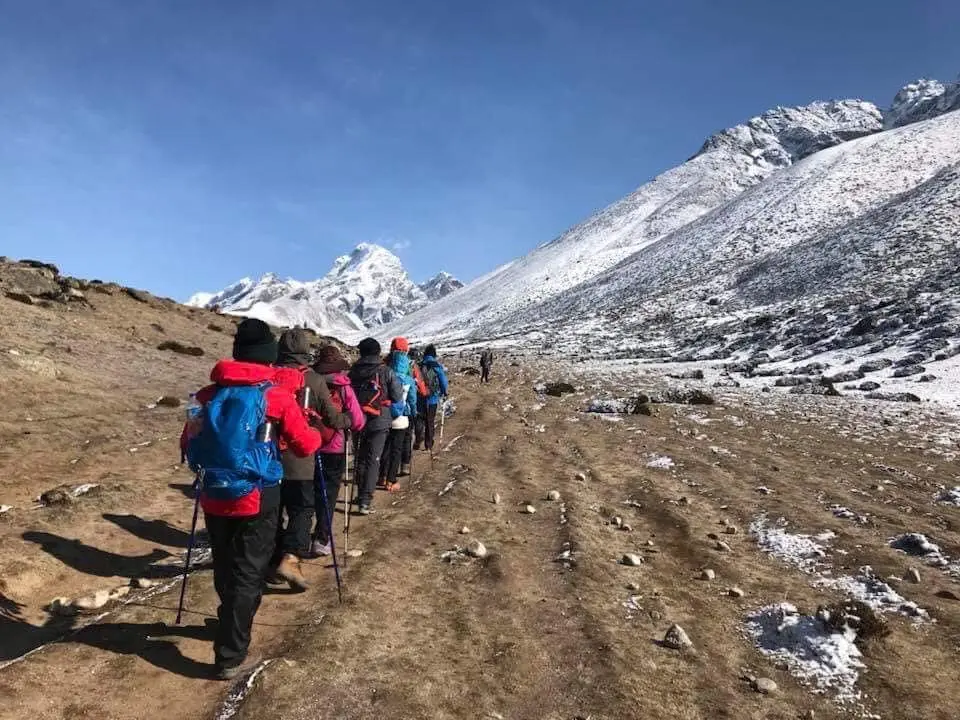How to Trek to Everest Base Camp?
Few experiences rival the humility of standing at the base of the world's tallest mountain. Towering nearly 9 km (5.5 miles) high, Mt. Everest—known as Sagarmatha in Nepali and Chomolungma in Sherpa and Tibetan—is encircled by a stunning amphitheater of Himalayan peaks. After a week of trekking to Everest Base Camp (EBC), with the descent still ahead, the view evokes profound emotion and lasting memories.This trek requires effort, time, and investment, but the payoff is extraordinary: immersion in Tibetan-influenced Sherpa culture, robust trekking facilities, and unparalleled mountain vistas. It's no surprise that EBC ranks among the globe's most legendary adventures.
Why Trek to Everest Base Camp in Nepal?
- While Everest spans the Nepal-Tibet border, nearly all Base Camp treks occur on the Nepali side. Here's why:
- Accessibility & Infrastructure: Well-developed lodges, guides, and transportation links make it straightforward.
- Authenticity: In contrast to Tibet's road access near the mountain, Nepal demands a foot journey (barring helicopter options).
- Cultural Immersion: The path winds through Sherpa villages, Buddhist monasteries, prayer walls, and bustling markets, enriching the trek beyond the endpoint.
- Tibet may offer wider Everest views, but Nepal delivers a more intimate, hands-on adventure. For active explorers, it masterfully blends challenge and cultural depth.
Best Time to Trek
- Opt for autumn (October–November) or spring (March–May) for clear skies and reliable weather. Spring aligns with Everest's climbing season, drawing larger crowds.
- Summer/monsoon (June–September) features rain, slippery trails, and frequent Lukla flight disruptions.
- Winter (December–February) means fewer people and sharp vistas, but brace for snow and sub-zero temperatures.
How Long Does It Take?
The classic route starts with a flight from Kathmandu to Lukla (2,860 m), followed by 12–14 days trekking in Sagarmatha National Park. Standard itineraries build in acclimatization at Namche Bazaar and Tengboche, ascending gradually to EBC (5,364 m).
Key highlights include:
- Namche Bazaar (3,440 m): The vibrant Sherpa hub.
- Tengboche Monastery (3,860 m): Khumbu's spiritual heart.
- Lobuche & Gorak Shep: Last outposts before Base Camp.
- Everest Base Camp (5,364 m): The triumphant highlight.
What to Expect
- Daily Trekking: 3–8 hours on maintained paths, with steep climbs (e.g., Phakding to Namche) and elevated passes.
- Scenery: Lush forests, swaying suspension bridges, glacial streams, rugged rocks, and awe-inspiring peaks like Ama Dablam.
- Culture: Monasteries, fluttering prayer flags, engraved mani stones, and landmarks like Sir Edmund Hillary's school in Khumjung.
- Accommodation: Basic teahouses with shared facilities or upscale options like Mountain Lodges of Nepal. Hot showers are scarce; bucket baths prevail.
- Food: Nourishing dal bhat, noodles, soups, and Sherpa specialties. Western treats and bakeries pop up in hubs like Namche.
Trek Difficulty
No technical skills needed, but endurance is key. Altitude rises from Lukla's 2,860 m to EBC's 5,364 m, thinning the air and dropping temperatures, particularly at night. Fitness aids, yet resolve and measured pacing are essential.
Permits & Paperwork
Required documents include:
- TIMS Card (Trekkers’ Information Management System)
- Khumbu Rural Municipality Permit
- Sagarmatha National Park Entry Fee
Essential Packing List
- Trekking poles (essential!)
- Sleeping bag (or liner, based on lodge provisions)
- Down jacket & waterproof gear
- Base layers (merino wool or synthetic)
- Well-worn hiking boots & quality socks
- Warm hat, sun hat, and sunglasses
- Headlamp, sunscreen, hand sanitizer, and wet wipes
- Personal meds, blister kits, and first-aid essentials
- Toilet paper & basic toiletries (water is scarce)
Health & Safety
Acute Mountain Sickness (AMS) poses the primary threat, often emerging above 3,000 m and intensifying higher up. Built-in acclimatization days are vital, with guides vigilant for signs.
Safety tips:
- Ascend slowly, honoring rest days.
- Hydrate well and skip alcohol.
- Use Diamox (acetazolamide) for minor AMS if advised.
- Descend promptly if symptoms escalate—AMS can be fatal.
Final Word
The Everest Base Camp trek transcends a mere hike; it's a transformative odyssey. With stunning landscapes, profound Sherpa heritage, and the exhilaration of nearing the planet's summit, it fuses physical trial with soulful fulfillment. Challenging yet profoundly gratifying, this path stands as one of Earth's ultimate escapades.

